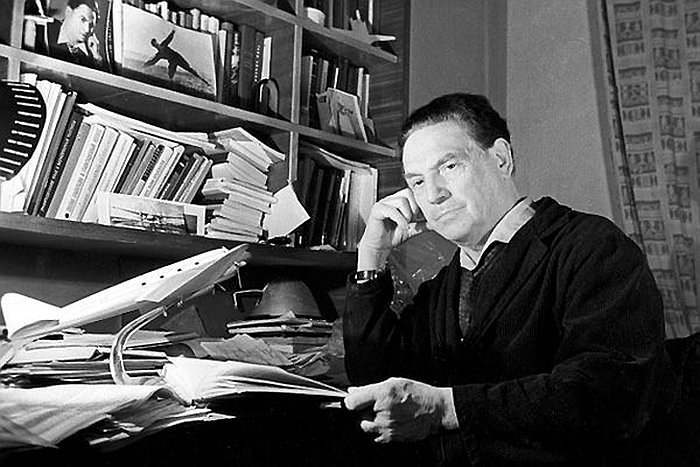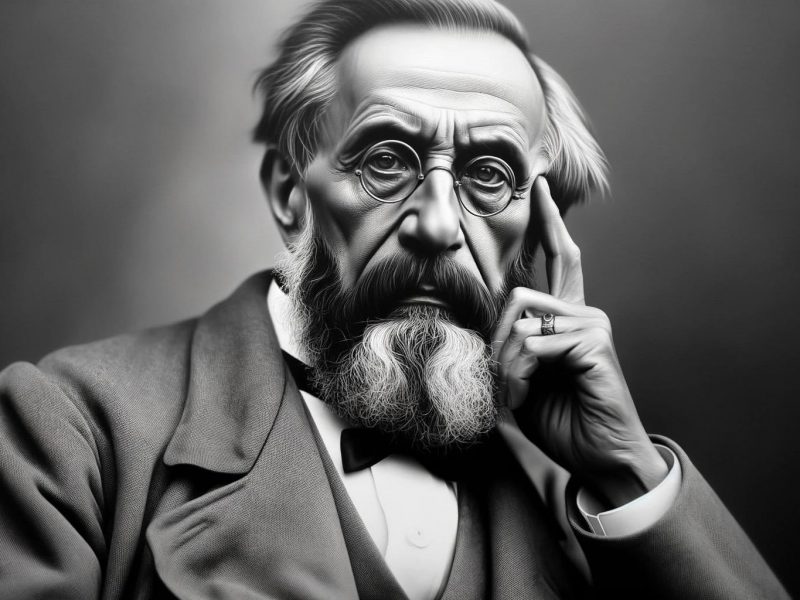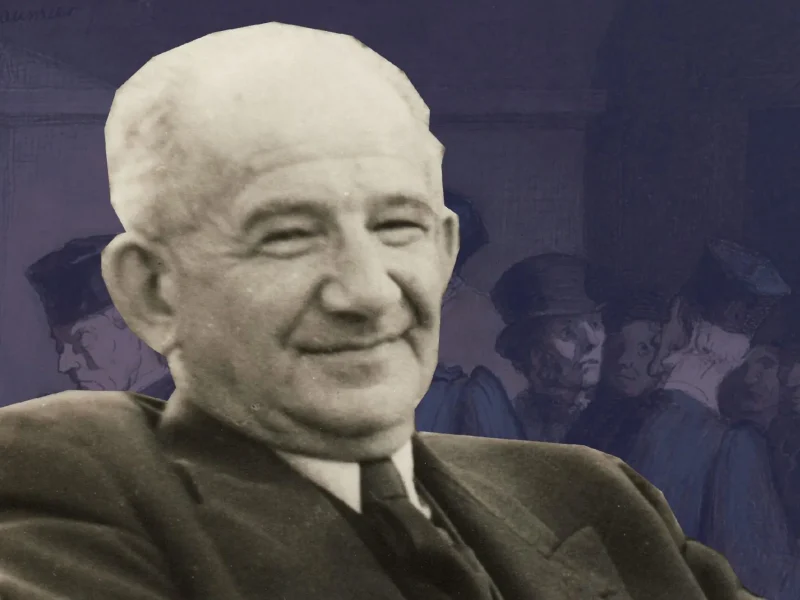Howdy, amigo! Strap in, because today we’re unraveling the awe-inspiring narrative of Robert Bartini. Believe me, this chap seldom basks in the acclaim he’s truly earned in the domain of aeronautical wizardry. So, whatever your poison—java, herbal infusion, or good ol’ H2O—let’s roll!
Emerging from Fiume, today’s Croatia, Bartini’s life was far from run-of-the-mill from square one. Visualize this—a youthful intellect persistently transcending conventional barriers, especially when plunging into the intricate universe of aviation and mechanical mastery during epochs fraught with social instability.
Robert Bartini was not just another cog in the machine; the guy was an oracle. He envisioned nuances in aero-craftsmanship that eluded many. His undertakings often carried the aura of the avant-garde, which, let’s be real, is just a fancier term for ‘sheer brilliance.’ It wasn’t merely an exercise in defying gravity; it was a quest to alter our perceptions of the celestial sphere.
Okay, here’s the deal: Bartini never tiptoed around obstacles. Whether marveling at his phenomenal Stal-7, a flying machine shattering previous records, or his groundbreaking propositions like the A-57 tactical aircraft, the dude was relentless. Truly, a man ahead of his milieu.
During periods brimming with high stakes, namely World War II and the Cold War, Bartini was engrossed in his craft. The enormity, my friends, is hard to fathom. The man continually pressed against the boundaries—quite literally.
What’s riveting is Bartini’s knack for harmonizing utilitarian concerns with unorthodox flair. Constraints such as materials, fluid dynamics, or even the geopolitics du jour were duly noted but never allowed to stifle his imaginative prowess.
Frustrations and downturns? Absolutely, he faced them. But what differentiates Bartini is his indomitable fortitude. Despite daunting challenges like incarceration, he never lost sight of his ardor for flight. That’s the epitome of sheer resolve, folks.
Among this whirlwind, he even spearheaded guidance initiatives. Yep, this man was a beacon for upcoming engineers, many of whom achieved their own stardom in the cosmic and aero realms. Bartini didn’t just influence winged constructs; he sowed the seeds for revolutionary perspectives on airflow mechanics and mobility.
Robert Bartini – The Maestro of Skyward Mechanics
Firstly, let’s chit-chat about the Stal-7. Not ringing any bells? Well, it should! This isn’t your average flying machine tailored for extensive distances. Crafted in the twilight of the 1930s, this airborne marvel was a showpiece of fluid dynamics like none before. This bad boy was streamlined, agile, and here’s the showstopper: ridiculously fuel-savvy. Bartini looked at the trifecta of speed, finesse, and fuel efficacy and said, “Why not all three?” This dude realized that fuel wasn’t just some expendable; it was a pivotal asset.
On to the brainy stuff—the realm of theoretical insights. Bartini was a bona fide intellectual powerhouse, to put it mildly. One of his most talked-about theories dwelt on relative aerodynamics. In non-technical jargon, Bartini was enamored with proportions and ratios. His premise? Every aircraft segment should harmonize with every other, essentially crafting a symphony of efficacy and high-performance. And guess what? This wasn’t just confined to the sky; these revolutionary ideas trickled down to influence various modes of transit engineering and even maritime constructs.
Ever stumble upon the term EKRANOPLAN? No, it’s not some extraterrestrial landform. It’s a genre of surface-effect vessel. Think of a hybrid of an aircraft and a hovercraft. In layman’s terms, envision a contraption skimming so near the surface—land or sea—that it capitalizes on the ground effect to minimize resistance. Bartini took this nascent notion and envisioned its military potential, like fast, low-flying machines that could slip below radar detection.
And oh, prepare to have your mind blown by the Bartini Beriev VVA-14. In essence, it’s an airborne vessel intended to obliterate underwater crafts. Unveiled in the 1970s, this hybrid design was capable of vertical liftoffs, rocketing through the sky, and water landings. It was the stuff of fiction made real, encapsulating Bartini’s affinity for cross-disciplinary mechanization. Although it didn’t enter full-fledged production, its pioneering principles continue to be dissected and admired to this day.
Finally, let’s not forget the man’s persona. Bartini was more than just an engineer; he was an inspirer, a guru in the true sense. He didn’t merely construct flying machines; he nurtured a lineage of future aerospace mechanics. Many under his tutelage eventually left indelible marks in cosmic and skyward engineering.
Robert Bartini – Innovative Aircraft Designs
Let’s kick off with the Stal-7, a piece of pure brilliance. Designed in the late 1930s, this was no ordinary plane. This was the epitome of aeronautical creativity. Now, why was it so special? Bartini paid utmost attention to lift-to-drag ratios. This guy was all about optimizing how much the plane could lift versus the drag it experienced. What this meant was a craft that could go fast, really fast, without guzzling fuel like a thirsty camel.
The Stal-7 also laid the foundation for what came to be known as weight-to-thrust optimization. This theorem basically says, “Hey, let’s get the maximum amount of speed and lift without overloading the plane or burning too much fuel.” Bartini applied this idea by tweaking the engine mechanics, adjusting the wing structure, and even streamlining the body. These weren’t small changes; they were revolutionary leaps.
But wait, there’s more! Have you heard of the Bartini Beriev VVA-14? Oh man, you’re in for a treat. This aircraft was aimed at tackling the trickiest of missions: hunting submarines. The idea was to have a plane that could land on water, release torpedoes, and take off again. Imagine that! An aircraft that doubles as a mini-naval base. This very design also saw Bartini delve into the concept of wing-in-ground (WIG) effect, which he used to decrease drag and increase stability when the aircraft was near the surface of the water.
Now, as we’re talking Bartini, let’s discuss his fascination with modular designs. Most engineers back then were focused on building a craft for a specific purpose, but not Bartini. He looked at an aircraft as a collection of interchangeable parts that could be assembled based on the mission’s needs. So, one day it could be a cargo plane, and the next, it could be optimized for surveillance or even adapted for combat. Think of it as the Swiss Army knife of aircraft designs.
Another awe-inspiring theorem he explored was that of proportional aerodynamics, a complex term that basically deals with how each part of the aircraft interacts with the other. In Bartini’s eyes, every screw, every wing, and every engine had to exist in harmony to achieve maximum efficiency and performance. This was not just theoretical; he actually applied these principles in his designs, influencing countless generations of aeronautical engineers.
Ever wondered why aircraft designed for high-speed often have specific shapes? That’s because they need to overcome the sound barrier. And Bartini had this all figured out decades ago. He focused on creating body shapes that would minimize the shock waves created at high speeds, thus reducing the drag that slows the plane down. This principle came to be recognized as transonic aerodynamics, which is still an integral part of modern aviation.
So, if you’re an aspiring aviation guru or just love the sheer thrill of pushing the envelope, Robert Bartini’s your man. From the Stal-7 to the Bartini Beriev VVA-14, from weight-to-thrust optimization to proportional aerodynamics, this guy was all about pushing boundaries. And his influence? Oh, it’s more than just history; it’s the nuts and bolts of the machines that continue to rule our skies. Keep that name in your back pocket; it’s one for the annals of genius.
Robert Bartini – Cold War Era Work
So here’s the deal: During the Cold War, it wasn’t just about missiles and submarines, folks. No, siree! Aviation tech was an equally hot potato. And nobody was baking those potatoes better than Bartini, who was all in with projects like the EPOS. That’s right, the Experimental Passenger Supersonic Aircraft. Though the aircraft didn’t take off as planned, the groundwork laid out ideas for supersonic speed that were eons ahead of their time.
The first buzzword that pops up when you deep dive into his Cold War work is strategic bomber theory. What’s that, you ask? Think of it as the answer to the ultimate question: “How do you fly undetected over thousands of miles to deliver a payload?” It wasn’t just about speed; Bartini knew it was also about stealth and range. His concept of aerial refueling was revolutionary at that time.
Now, let’s veer toward his work on VTOL, Vertical Take-Off and Landing. Bartini’s ideas here were like a magic trick up the sleeve for the Soviets. He contemplated about how you can make an aircraft land and take off like a helicopter but still have the speed of a jet. This led to Bartini’s involvement in the VVA-14, a project that mixed naval capabilities with airborne strength, providing not only a direct offensive approach but also anti-submarine measures.
And can we talk about range capability for a moment? The man was obsessed with maximizing how far an aircraft could travel without compromising its payload. Fuel efficiency became his catchphrase. I mean, the guy was practically in a love affair with thermodynamics without even uttering the word. He examined air resistance, engine capacity, and even weight distribution, all to stretch the number of miles an aircraft could cover.
Ever hear of adaptive technology? Well, it was Bartini who thought that airplanes should adapt to the mission, not the other way around. He toyed with interchangeable parts, modular designs, and even convertible technology. Essentially, his planes could be quickly modified to adapt to different mission criteria, which was pretty much sci-fi level thinking back then.
Remember how I mentioned supersonic speed? Well, Bartini was also into sonic boom minimization. He was all about how to reduce the noise and the atmospheric shockwaves created when breaking the sound barrier. In layman’s terms, he wanted to make fast planes that didn’t let everyone within a 100-mile radius know they were coming. This, my friends, was nothing short of ingenious during the tense decades of the Cold War.
A good yarn about Bartini’s Cold War work isn’t complete without acknowledging his stance on dual-use technology. He firmly believed that advancements in military tech should also benefit civilian life. Hence, a lot of his theoretical work spilled over into what later became commercial air travel principles.
Robert Bartini – Mentorship
First off, let’s talk about the Bartini School of Thought. While not formally organized, this was an approach, a way of seeing the world of aerospace from multiple angles. Bartini was a stickler for critical thinking and problem-solving. Trainees, under his wing, were encouraged to question conventional norms. So, when you study Bartini’s mentoring style, you’re actually diving into a treasure trove of innovation and ingenuity.
You see, Bartini was a fan of the Socratic method. No, he wasn’t handing out quizzes. What he did was foster an environment where questions were not just welcomed; they were demanded. His philosophy was simple: if you’re not questioning, you’re not learning. This approach led to many young minds honing their skills in theoretical and applied aerodynamics.
So, what kind of projects did these budding engineers work on? Ah, here’s where it gets fascinating. Bartini’s pupils had their hands in everything from optimizing wing structures to improving jet propulsion mechanisms. By thrusting them into the deep end, he ensured they got a holistic grasp of the entire aviation design process. And, oh boy, did it pay off. Several of his mentees went on to make notable contributions in the field of aeronautical engineering.
And let’s not forget peer-to-peer learning. Bartini believed that collaboration was the fuel for innovation. He encouraged what is now known as horizontal mentorship, which is a fancy way of saying he made sure everyone learned from everyone. You’re struggling with drag coefficients? No problem, discuss it with a fellow trainee who excels in fluid dynamics.
The subject of empirical data was another hot topic in the Bartini mentorship world. He was all about data-driven approaches. That means, instead of following age-old formulas, Bartini encouraged his students to make their own calculations and assessments based on real-world data. Yeah, this wasn’t just textbook stuff; this was hands-on, dirt-under-your-nails type of learning.
How about cross-disciplinary learning? Bartini was no snob when it came to mixing fields. He often pushed his pupils into the realms of physics, mathematics, and even material science. His vision was that an excellent aeronautical engineer needs to be a good physicist and a decent mathematician as well. This is the kind of interdisciplinary approach that has made the backbone of modern aerospace projects.
Oh, and did I mention resilience? Bartini himself faced several setbacks throughout his career. And he made sure his protégés understood the value of bouncing back. This is the cornerstone of what later became known as grit theory in psychology circles, the ability to stick to long-term goals without getting deterred by failures.
Conclusion
In wrapping this up, let’s really digest the magnitude of Robert Bartini‘s impact, shall we? When you pause and think about it, this guy wasn’t just tinkering with aerospace gizmos in some lab. Nah, he was crafting the future, one young mind at a time. He was like that favorite teacher you had in school, the one who looked past the textbooks and asked, “Hey, how can we make this stuff rock?”
A teacher, a mentor, and a full-fledged visionary, Bartini was a triple threat in the best way. He pushed the envelope in aeronautical engineering, sure, but he also left an indelible mark in the arena of mentorship and guidance. You could say he was an early architect of human capital in the field. Yep, that’s a thing.
In terms of innovation, he was light-years ahead, always eager to shuffle up the deck and see what new combination might tumble out. And for the love of God, the man understood data like nobody’s business. He wasn’t about cutting corners or taking the easy route. Bartini was the real deal, in it for the long haul, building a legacy that we’re still feeling the vibes from today.
And hey, let’s not forget that resilience I mentioned earlier. The guy had grit, and he made darn sure his protégés had a double serving of it too. That’s not just teaching; that’s instilling a life lesson, a nugget of wisdom you carry with you long after you’ve stepped out of the lab or the classroom.
So, to sum it up, Robert Bartini was more than just his blueprints and calculations. He was a holistic figure, a rounded gem in a world of rough stones. The Bartini factor? It’s a cocktail of engineering brilliance, mentorship gold, and a dash of unbreakable willpower. A blend that, let’s be honest, is hard to come by. And that, my friends, is why he remains an icon in aeronautical engineering and a true mentor for the ages.
References
- The Untold Story of Robert Bartini
- Bartini: The Man Behind the Machines
- Robert Bartini and His Influence on Modern Aeronautics
- The Bartini Effect: Shaping Young Engineers
- A Master and His Apprentices: Bartini’s Teaching Methods
- The Aerodynamics of Bartini: A Revolution in Flight
- Bartini and the Cold War: Secrets and Innovations


